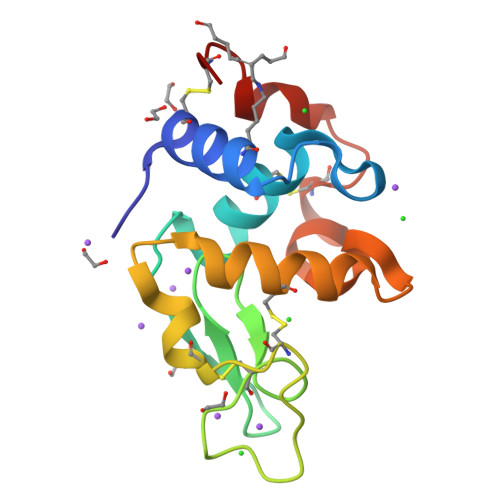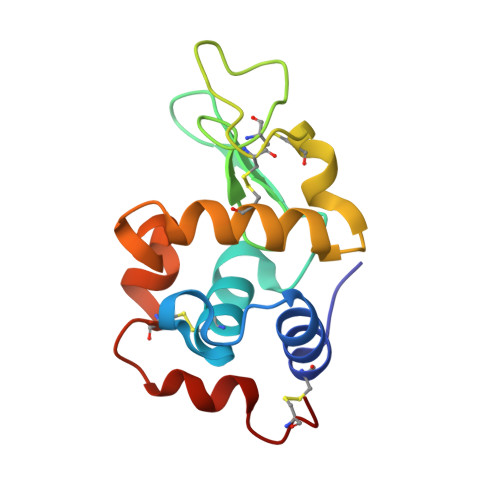Elucidation of the mechanism and end products of glutaraldehyde crosslinking reaction by X-ray structure analysis
Wine, Y., Cohen-Hadar, N., Freeman, A., Frolow, F.(2007) Biotechnol Bioeng 98: 711-718
- PubMed: 17461426
- DOI: https://doi.org/10.1002/bit.21459
- Primary Citation of Related Structures:
2HTX, 2HU1 - PubMed Abstract:
Glutaraldehyde has been used for several decades as an effective crosslinking agent for many applications including sample fixation for microscopy, enzyme and cell immobilization, and stabilization of protein crystals. Despite of its common use as a crosslinking agent, the mechanism and chemistry involved in glutaraldehyde crosslinking reaction is not yet fully understood. Here we describe feasibility study and results obtained from a new approach to investigate the process of protein crystals stabilization by glutaraldehyde crosslinking. It involves exposure of a model protein crystal (Lysozyme) to glutaraldehyde in alkaline or acidic pH for different incubation periods and reaction arrest by medium exchange with crystallization medium to remove unbound glutaraldehyde. The crystals were subsequently incubated in diluted buffer affecting dissolution of un-crosslinked crystals. Samples from the resulting solution were subjected to protein composition analysis by gel electrophoresis and mass spectroscopy while crosslinked, dissolution resistant crystals were subjected to high resolution X-ray structural analysis. Data from gel electrophoresis indicated that the crosslinking process starts at specific preferable crosslinking site by lysozyme dimer formation, for both acidic and alkaline pH values. These dimer formations were followed by trimer and tetramer formations leading eventually to dissolution resistant crystals. The crosslinking initiation site and the end products obtained from glutaraldehyde crosslinking in both pH ranges resulted from reactions between lysine residues of neighboring protein molecules and the polymeric form of glutaraldehyde. Reaction rate was much faster at alkaline pH. Different reaction end products, indicating different reaction mechanisms, were identified for crosslinking taking place under alkaline or acidic conditions.
Organizational Affiliation:
Department of Molecular Microbiology and Biotechnology, Faculty of Life Sciences, Tel Aviv University, Tel Aviv, 69978, Israel.























